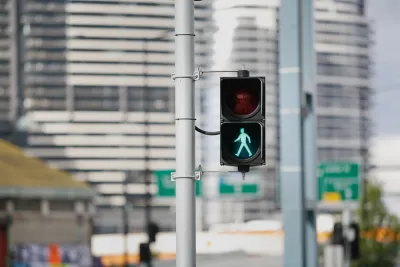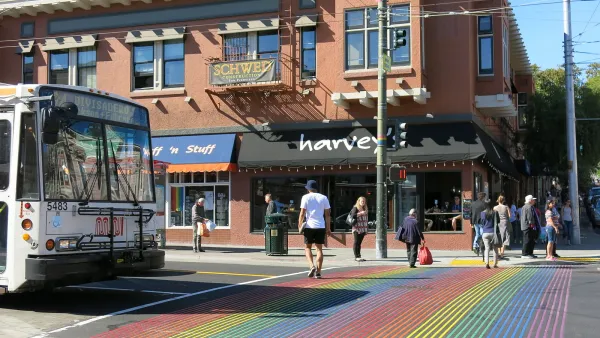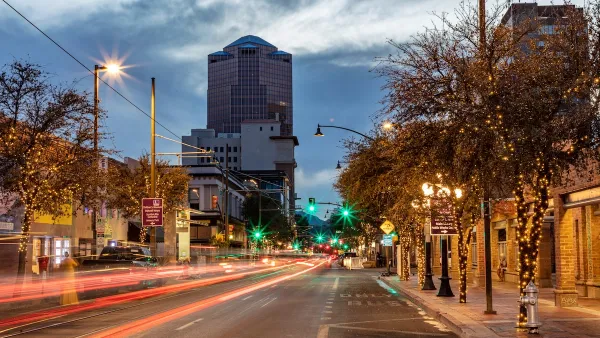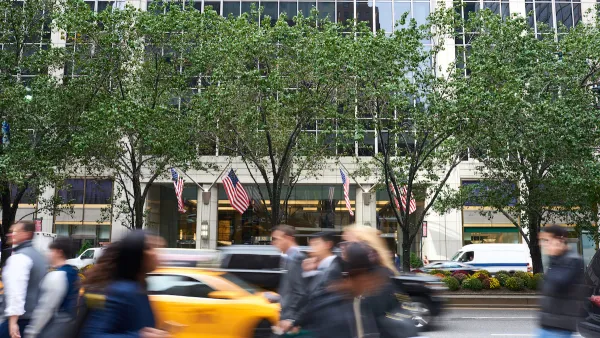A new law doesn’t fully decriminalize jaywalking, but bars law enforcement from issuing citations to pedestrians when crossings aren’t ‘truly dangerous.’

Pedestrian advocates have long criticized jaywalking laws as a tool for asserting the dominance of the car on American roads and deprioritizing the needs of other road users. Now, states like California are recognizing the harmful effects of jaywalking criminalization, writes Peter Norton in an opinion piece for the Los Angeles Times.
As Norton points out, “California’s new Freedom to Walk Act does not exactly decriminalize jaywalking. It leaves plenty of room for police discretion to ticket unsafe walking, and it doesn’t challenge cars’ domination of city streets.” But the law does acknowledge the need to make walking safer in other, less punitive ways that improve infrastructure and road conditions rather than punish pedestrians.
Norton outlines the rise of the automobile and, consequently, jaywalking laws, which became the norm after a strong lobbying effort from motor vehicle interests who explicitly called for “a radical revision of our conception of what a city street is for.” Norton walks the reader through the history of jaywalking laws in Los Angeles, where the first regulations took hold. According to Norton, “Their effort to protect their market for automobiles left us a legacy of highly restricted walking and the notion that streets are primarily for cars.”
Now, Norton writes, the Freedom to Walk Act, which limits enforcement of jaywalking regulations, is a step in the right direction to reclaim roads and shift the focus of road safety efforts to encourage more walking and multimodal transportation.
FULL STORY: Op-Ed: L.A. invented jaywalking tickets to serve cars. It's time to give streets back to walkers

National Parks Layoffs Will Cause Communities to Lose Billions
Thousands of essential park workers were laid off this week, just before the busy spring break season.

Retro-silient?: America’s First “Eco-burb,” The Woodlands Turns 50
A master-planned community north of Houston offers lessons on green infrastructure and resilient design, but falls short of its founder’s lofty affordability and walkability goals.

Delivering for America Plan Will Downgrade Mail Service in at Least 49.5 Percent of Zip Codes
Republican and Democrat lawmakers criticize the plan for its disproportionate negative impact on rural communities.

Test News Post 1
This is a summary

Test News Headline 46
Test for the image on the front page.

Balancing Bombs and Butterflies: How the National Guard Protects a Rare Species
The National Guard at Fort Indiantown Gap uses GIS technology and land management strategies to balance military training with conservation efforts, ensuring the survival of the rare eastern regal fritillary butterfly.
Urban Design for Planners 1: Software Tools
This six-course series explores essential urban design concepts using open source software and equips planners with the tools they need to participate fully in the urban design process.
Planning for Universal Design
Learn the tools for implementing Universal Design in planning regulations.
EMC Planning Group, Inc.
Planetizen
Planetizen
Mpact (formerly Rail~Volution)
Great Falls Development Authority, Inc.
HUDs Office of Policy Development and Research
NYU Wagner Graduate School of Public Service





























